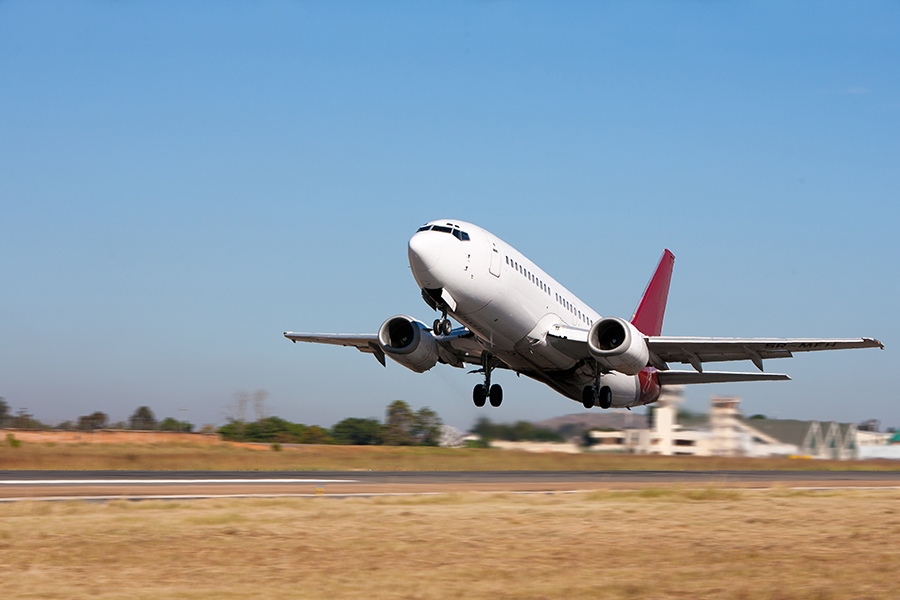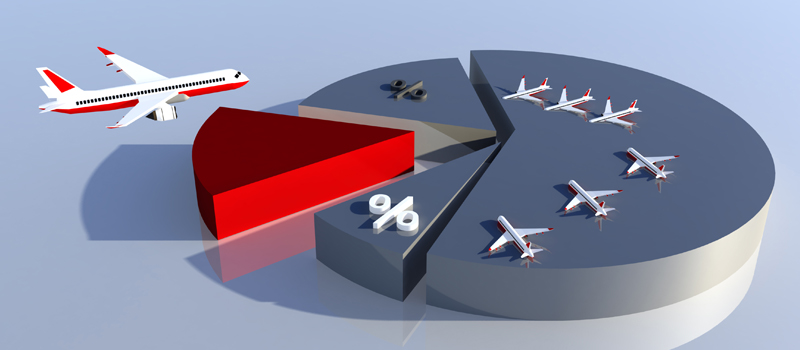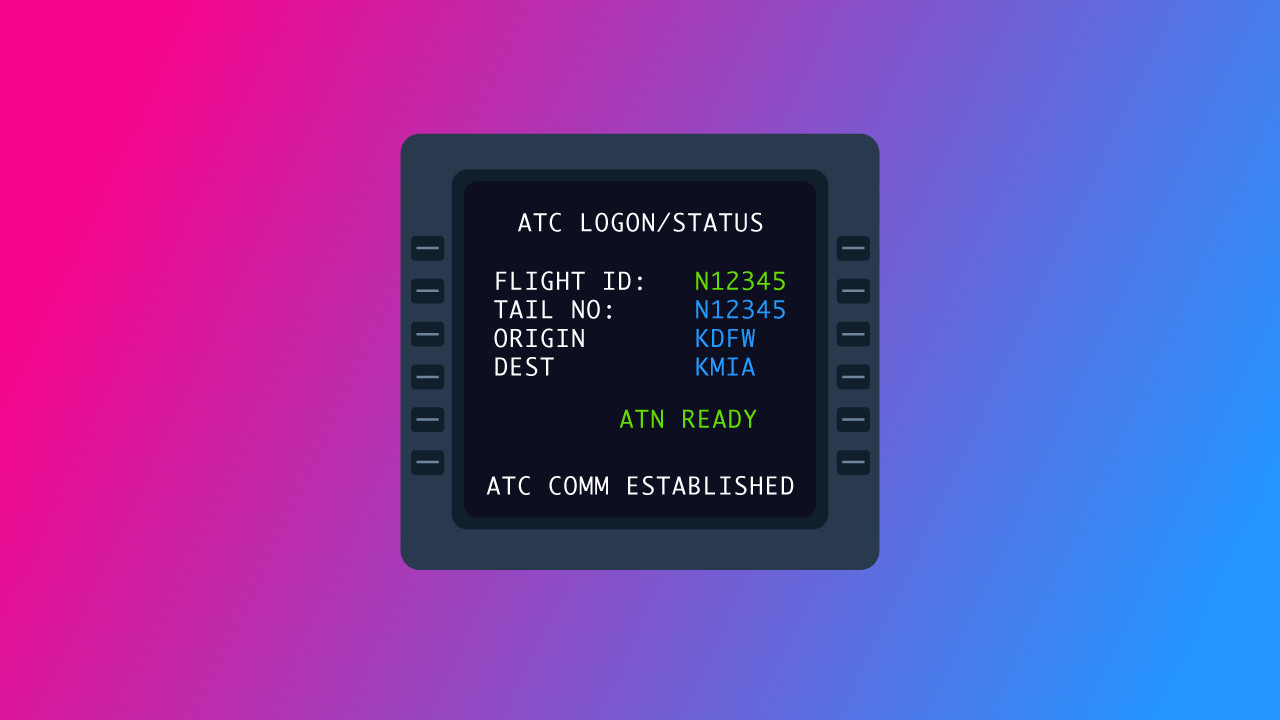-
What is a Rejected Takeoff?
- Low Speed Rejected Takeoffs
- High Speed Rejected Takeoffs
-
What Happens During a Rejected Takeoff?
-
What is the Latest Point a Pilot Can Reject the Takeoff?
-
How Often Do Rejected Takeoffs Happen?
-
What Are the Causes of a Rejected Takeoff?
-
7 Things to Consider When Flying
- If in Doubt, Don't Start the Takeoff
- Think About the Wind
- Stopping Isn't Always a Good Thing
- Brief the Departure
- Aviate, Navigate, Communicate
- Consider the Brakes
-
Final Thoughts
There comes the point in every pilot’s career when they have to decide whether to get airborne. Sometimes this decision will come at the latest possible moment, leading to a rejected takeoff. Today, we will talk you through everything you need to know about rejected takeoffs, discuss some of the causes, and give you some extra things that need to be considered if you decide not to get airborne.
What is a Rejected Takeoff?
A rejected takeoff is a maneuver performed to bring the aircraft to a safe stop on the runway instead of getting airborne. The rejected takeoff can be hazardous. The aircraft is low on speed and close to the ground. However, provided it is performed correctly, it is often safer than taking off.
There are generally two ‘regimes’ to consider when discussing rejected takeoffs. They are as follows:
- The low speed rejected takeoff
- The high speed rejected takeoff
While both of the above ultimately achieve the same goal, there are pitfalls and hazards to consider that are unique to each scenario.
Let’s look at both in detail….
Low Speed Rejected Takeoffs
The low-speed rejected takeoff occurs very early on in the takeoff roll. Generally, this ‘abandon’ can be performed for practically any reason. Because the aircraft is traveling at low speed, there isn’t a great deal of inertia and energy.
Here’s why that is a good thing…
The more energy an aircraft has, the longer it takes to decelerate. As a result of low-speed abandoned takeoffs being relatively low energy, there should be a large amount of runway remaining for the aircraft to safely decelerate back down to taxiing speed.
In small light aircraft, having enough runway remaining is rarely a problem. However, there are a few things that do present a hazard during low-speed takeoffs.
Such as?
Each engine produces thrust offset from the airplane’s central axis in twin-engine aircraft. In the event of an engine failure during the takeoff (requiring a rejected takeoff), there is suddenly massive asymmetry.
And here’s the thing…
This asymmetric force is normally countered by the rudder, and the rudder is more effective at higher speeds. There may be insufficient rudder authority to keep the aircraft on the runway at low speeds. This scenario will often require asymmetrical braking to maintain anything like a straight course…
Suddenly, low-speed rejected takeoffs are a little more complex than they first appear.
High Speed Rejected Takeoffs
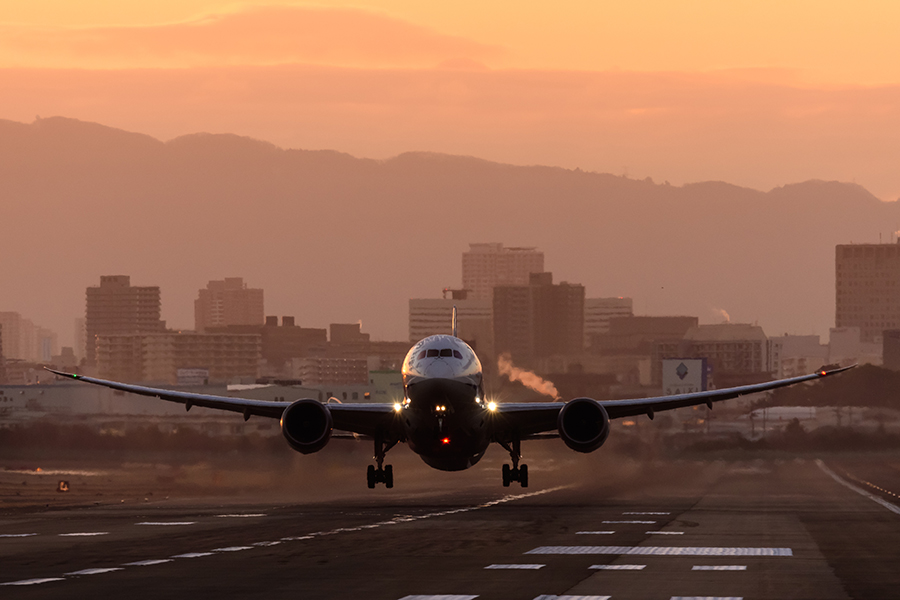
High-speed rejected takeoffs are a different beast altogether. The aircraft will be approaching takeoff speed, and there is a great deal of inertia and energy.
Furthermore, the faster the aircraft goes, the more runway it is eating up, second by second, meaning that the time available for the pilot to make a decision to stop or continue gets shorter and shorter, the faster the aircraft gets.
In the later stages of the takeoff run, a rejected takeoff can create ‘the perfect storm. We have the following factors to consider:
- A fast aircraft
- A potential problem
- Reduced decision time
- A short amount of runway remaining
The rejected takeoff at high speed needs to be considered each and every time you are getting ready to depart.
What Happens During a Rejected Takeoff?
A rejected takeoff is a formulaic maneuver, regardless of whether it is performed at high speed or low speed. How it is performed will vary depending on aircraft type. However, there are some common actions. The pilot will:
- Make the decision to stop or continue
- Close the thrust or throttle levers
- Maintain the runway centreline using the rudder pedals
- Apply braking as appropriate (all the way up to maximum braking if required)
- Bring the aircraft to a stop
- Notify Air Traffic Control that the aircraft is stopping
- Apply the parking brake once stopped
- Diagnose any potential problems and vacate the runway or evacuate the aircraft.
The above actions, while general, are performed on all aircraft, from the smallest Cessna all the way up to big aircraft like Airbus A330s!
Want to see a simulation of a rejected takeoff? Check this out and see if you can spot all of the above actions!
What is the Latest Point a Pilot Can Reject the Takeoff?
The latest point at which the pilot can elect to perform a rejected takeoff is called “V1”. This term refers to a speed that the pilot will observe during the takeoff roll. Below this speed, the pilot may consider rejecting the takeoff. After this speed, the takeoff should be continued.
But what is V1?
In the simplest terms, V1 is the point at which, should an abandoned takeoff be performed any later, the aircraft might not have enough runway remaining to stop, leading to a runway overrun and airplane accidents.
Yep, this is less than ideal.
There are a lot of factors that can affect V1 speed. It is highly dynamic. Some things that the pilot will consider when calculating V1 include: –
- Aircraft weight
- Runway length
- Surface wind
- Air temperature
- Air pressure
- Close in Obstacles around the airport
Why do all of the above affect V1 and the latest point at which the pilot can abandon the takeoff?
In short, all of the above have a massive influence on the takeoff distance required by aircraft. Higher temperatures, lower air pressure, a tailwind, and a heavy aircraft all cause an increase in the distance required to accelerate and stop the aircraft safely.
And…
To complicate matters, even more, commercial aircraft manufacturers often take full advantage of longer runways and require the pilot to take off with reduced engine power to preserve engine life. This means that V1 is reached later, with less runway remaining…
While it is simple in principle, V1 can get complex very quickly.
For now, all you need to know is that V1 is the “go/no go” speed.
How Often Do Rejected Takeoffs Happen?
Thankfully, rejected takeoffs are relatively rare. Aside from the fact that most modern aircraft are extremely reliable, it must be borne in mind that abandoning a takeoff (both at low and high speed) can be hazardous.
As we said previously…
Speed and being close to the ground are the cause of many airplane incidents. And you won’t come any closer to the ground than in takeoff!
According to a study from Boeing, on average, a rejected takeoff will be performed for every 3000 successful takeoffs. The study also notes that around three-quarters of abandoned takeoffs are performed at relatively low speed.
What Are the Causes of a Rejected Takeoff?
The causes of rejected takeoff are numerous. The truth is that pilots can consider aborting a departure for any reason. However, here are some of the most common causes of abandoned takeoffs: –
- Engine failure during the takeoff roll
- Flight control problems
- Obstructions on the runway
- Weather and thunderstorms on the departure track
- Engine fires
- Doors indicating as open
- Blown tires
- At the request of ATC
- Pilot Incapacitation (multi-crew aircraft)
- Birds on the departure course or runway
- Passenger issues
- And many more…
The above list is by no means exhaustive. Nor would it be strictly necessary to stop the aircraft with all of the above.
Why?
Well, read on as you are about to find out…
7 Things to Consider When Flying
As we have stated, the rejected takeoff can be a hazardous maneuver that requires some thought long before you would ever need to perform one.
But, what do you need to think about?
Here is a list of things that make an abandoned takeoff much more likely to be successful: –
If in Doubt, Don’t Start the Takeoff
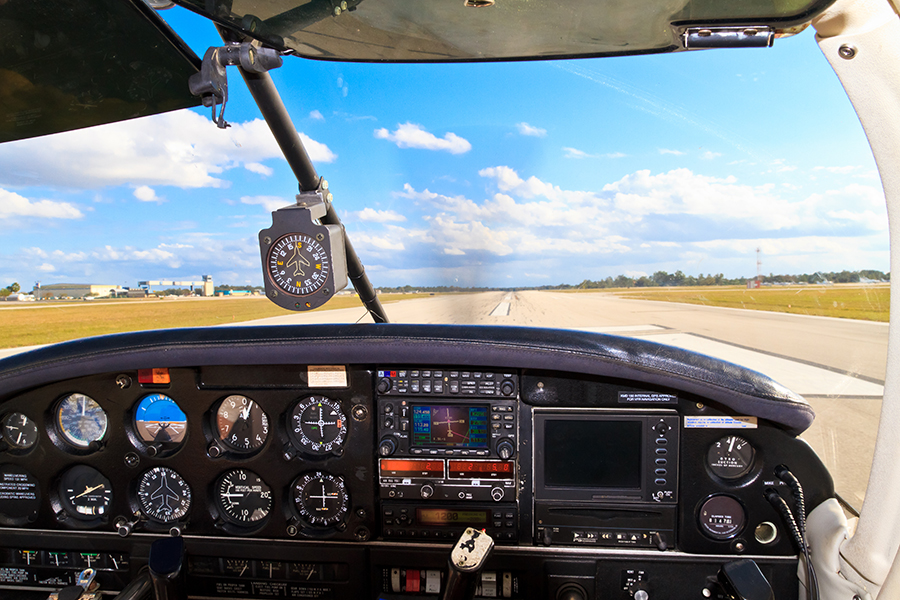
The popular saying goes, “what goes up must come down”.
Read between the lines here.
The takeoff is the only optional part of the flight. Landing is most definitely mandatory. Suppose you are unsure about the aircraft, flying conditions, or spot something that may lead to a rejected takeoff. In that case, there is a really simple solution.
Don’t go!
It is better to be on the ground wishing you were in the air than in the air wishing you were on the ground. The easiest to perform rejected takeoff is when the aircraft isn’t moving at all.
If there is any doubt before you start the takeoff roll, then there is no doubt. Delay the takeoff and consider your options.
Think About the Wind
When lining up for the takeoff roll, it is always great airmanship to have a quick glance at the windsock or get the tower wind before you depart.
A tailwind will increase your stopping distance and make it more difficult to stop at high speed.
And there’s more…
Should you be flying a twin, the wind can add to asymmetry in the event of engine failure on the takeoff roll. Ideally, in the event of a fire, you will want to abandon the takeoff so that the fire is blown away from the fuselage.
Having a good knowledge of where the wind is coming from is a surefire sign of excellent airmanship.
Stopping Isn’t Always a Good Thing
Take a good look at our above list of causes of rejected takeoffs. A few stand out, and not for the reasons you might think…
Found the one that says ‘blown tires’?
Sure, you may want to stop the aircraft if this happens (it normally makes a loud bang and plenty of vibration)…
But…
This is one of those cases where it pays to have a think about it. The aircraft will be stopped due to friction between the tires and the runway. And you’ve just lost quite a lot of tire surface area with a puncture.
With a burst tire, there are two options, especially at high speed: –
- Try and abort the takeoff with relatively little runway remaining, at high speed, with degraded stopping power
- Continue the takeoff, get airborne, and return with more runway available and a slower speed.
Which of the two above options sounds preferable to you?
B, right?
You can see why stopping and rejecting the takeoff might not always be the best choice with the above.
Brief the Departure
Being a good pilot is all about generating options. From the start of the flight all the way through to when you park back on the stand.
The key to achieving this?
Forewarned is forearmed. By mentally rehearsing likely scenarios and your actions, you are much more likely to achieve a successful outcome.
Briefing is an invaluable tool for amateur and professional pilots alike. Make it part of your pre-takeoff routine to rehearse what you will do if you need to stop. Most pilots are guilty of being “go” minded, so when a problem occurs that requires them to stop, they are caught unawares.
Briefing the unusual, not the expected, is great airmanship.
If there are birds around the field, discuss how you’d stop and what your actions will be (even if it’s just talking to yourself).
If there is bad weather forecast, check the departure track before getting airborne.
If a new pilot is doing “touch and goes” on a crossing runway, brief yourself that they may perform a full stop, so expect ATC to request you to abandon takeoff.
By rehearsing the ‘what if,” you will be prepared if something does occur.
Aviate, Navigate, Communicate
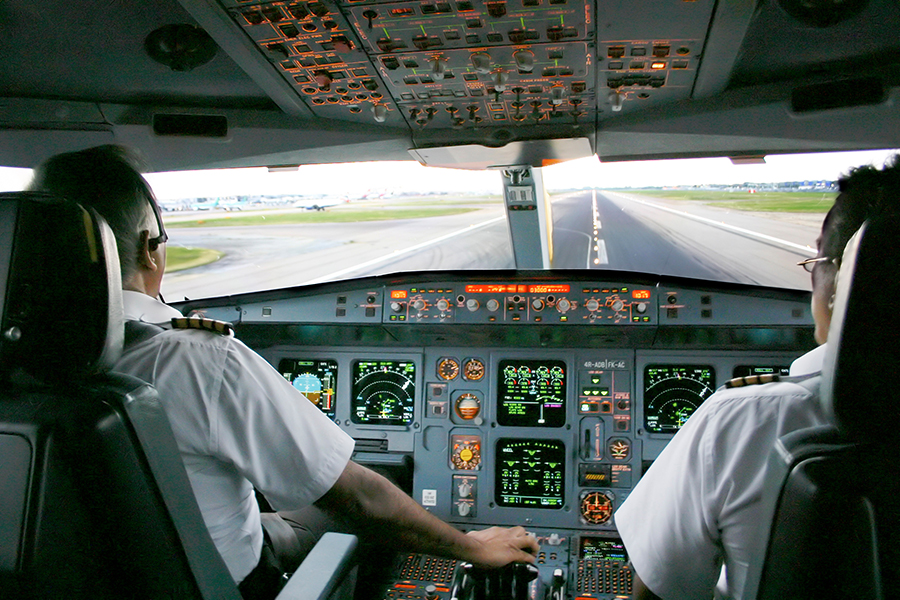
This is a golden rule of aviation. The most important thing to do as a pilot is…
FLY THE AEROPLANE
This includes handling on the ground during a rejected takeoff. The chances of a rejected takeoff are slim, and this may be your one and only chance to get it right.
Informing air traffic control you are stopping is the last thing on your ‘to do list when abandoning a takeoff. Get the aircraft safe and stop first before seeking help from others.
Consider the Brakes
A rejected takeoff will cause your brakes to become extremely hot. Knowing this fact is important for a few reasons.
First, if you have a technical problem, such as a fuel, oil, or hydraulic leak, the potential for an aircraft fire is magnified if this fluid contacts your hot brakes. So, once you have stopped, don’t assume the emergency is over.
If time and workload permit, it is often worth requesting that the airfield fire service can accompany your aircraft back to stand.
Second. Let’s say you have abandoned the takeoff and decide to go again straight after.
Wait, not so fast, hot-shot.
Brakes convert kinetic energy to thermal energy, and the hotter they are, the less efficient they are. If you need to stop again, you will find that the brakes will be far less efficient immediately following a high-speed stop.
Allow sufficient time for brake cooling if you’ve been heavy on the brakes.
Allow Sufficient Preparation Time for Your Flight
The key to a successful flight is great preparation, and for that, you will need time. Look again at our list above of all of the things that can influence an aircraft’s takeoff and stop distance.
Do you know all of the above before you fly? (Hint, you should).
If not, perhaps it is a good idea to arrive and appraise yourself of all of the factors that may influence your stopping distance before you really need to know them when performing a rejected takeoff.
Final Thoughts
When performed properly and efficiently, a rejected takeoff is a safe maneuver. However, if incorrectly performed, it can come with many pitfalls and hazards. Thankfully it is a rare occurrence. Preflight preparation and a good understanding of flight procedures are vital to being a successful pilot. The good news is that you can learn a lot from the comfort of your own home. Check out some of our courses for more great guidance on flight procedures. Some are even free!
